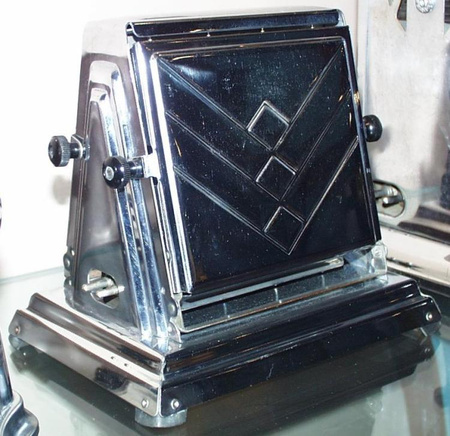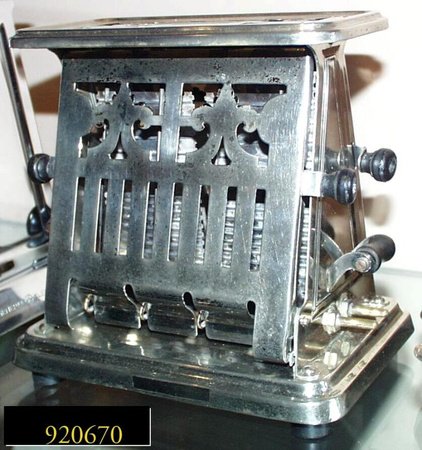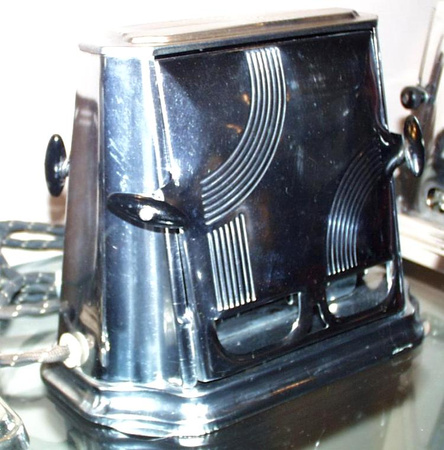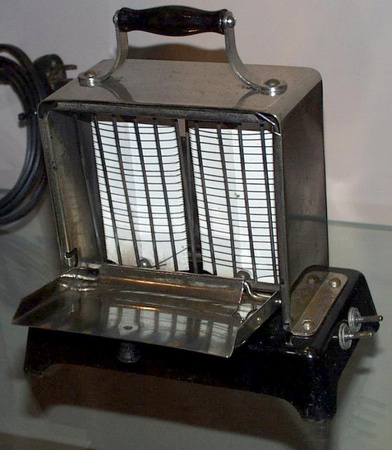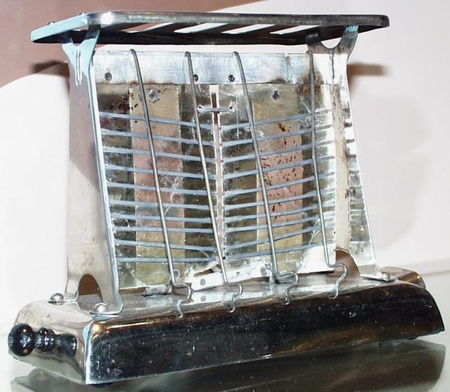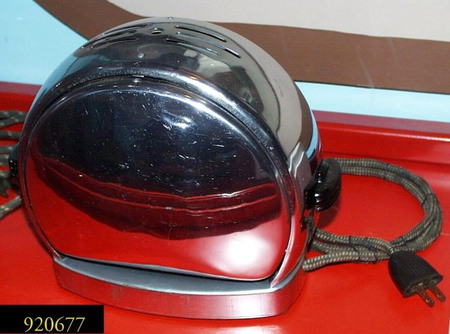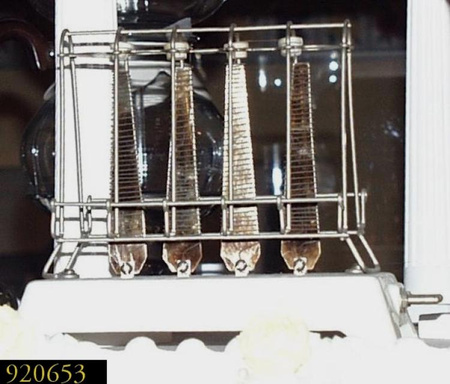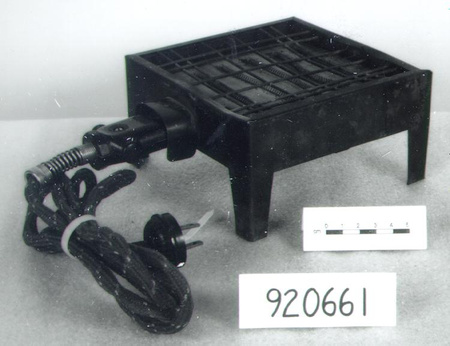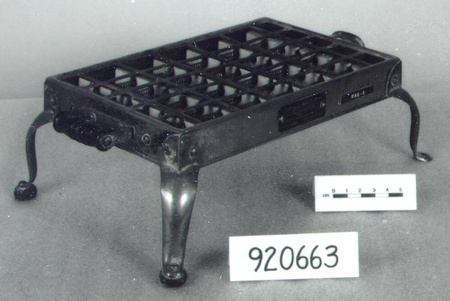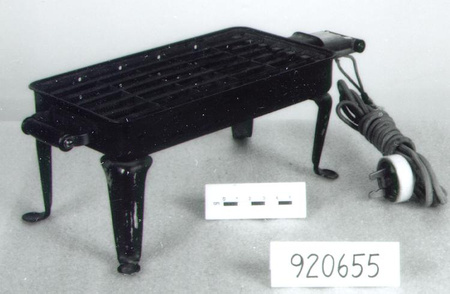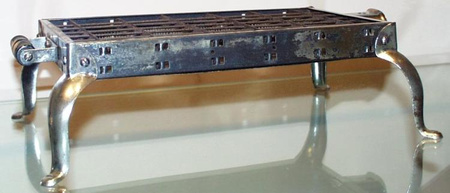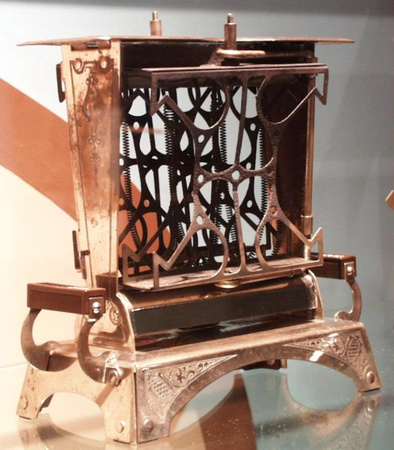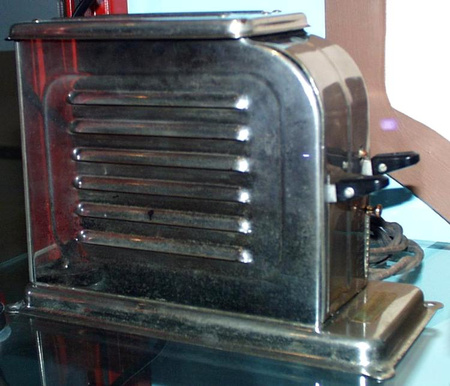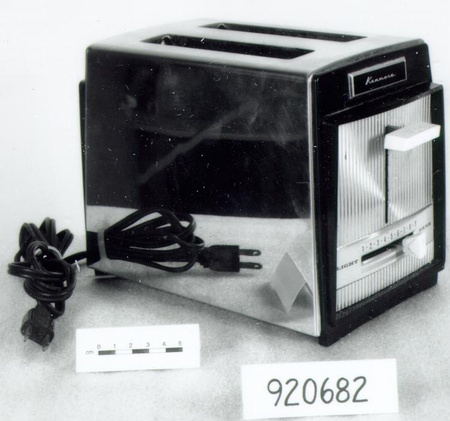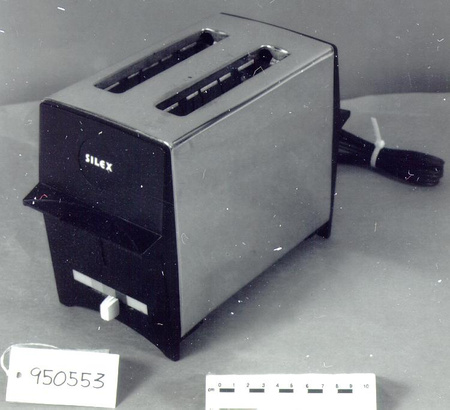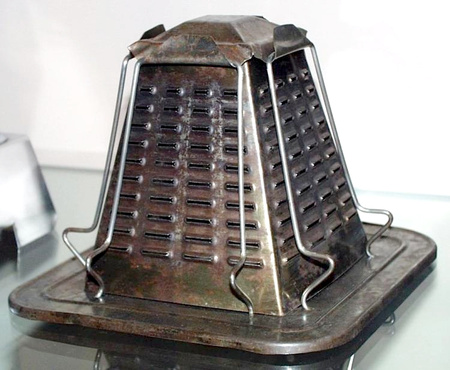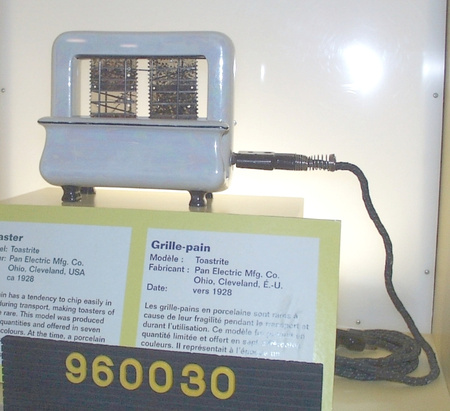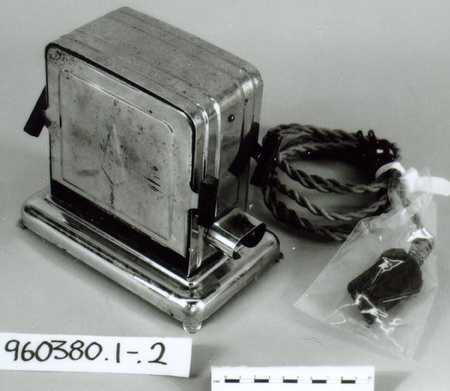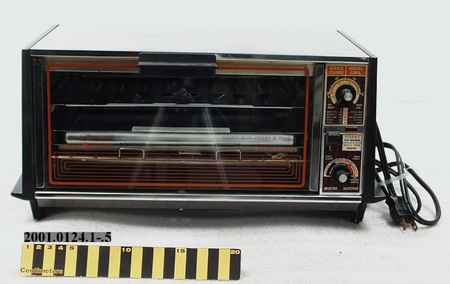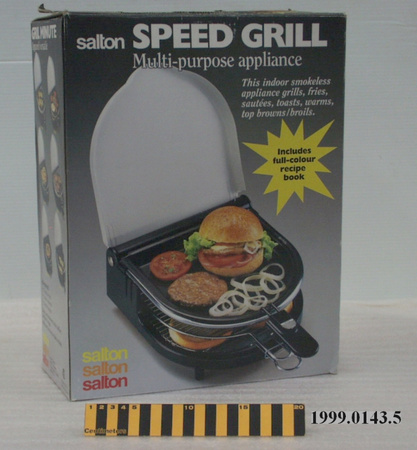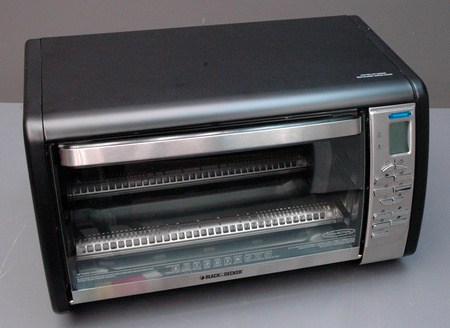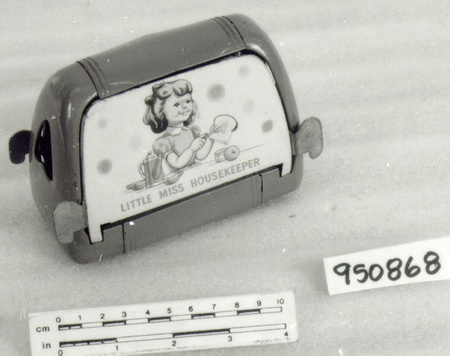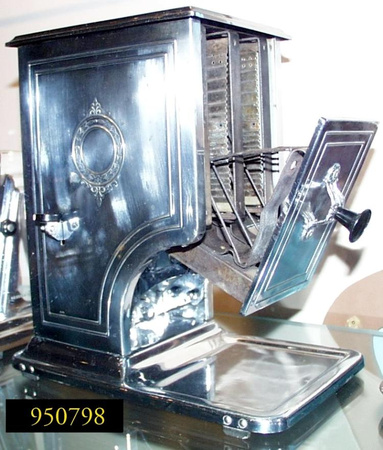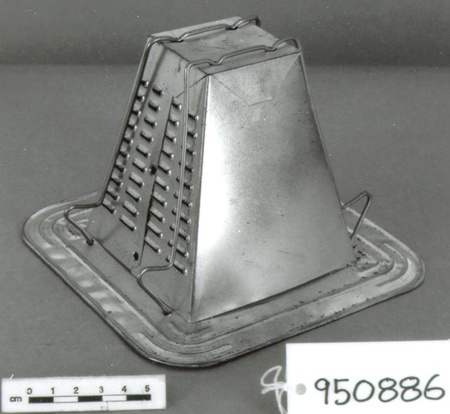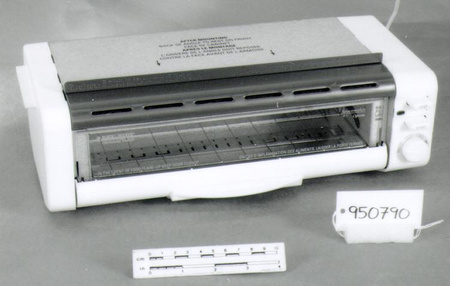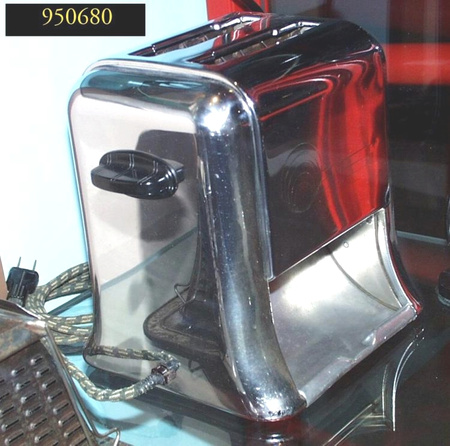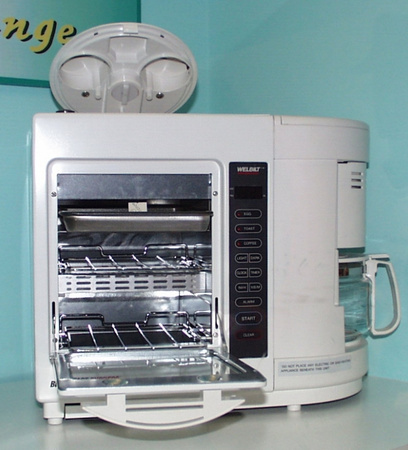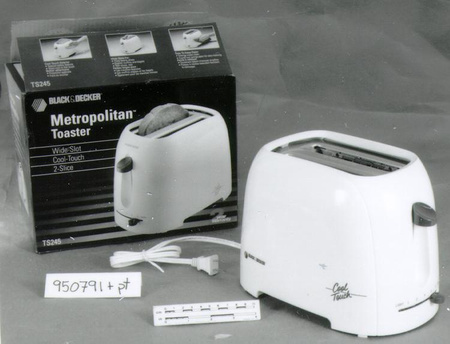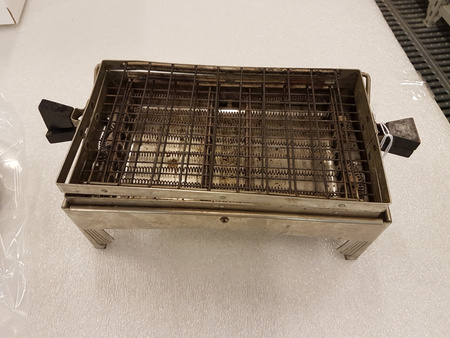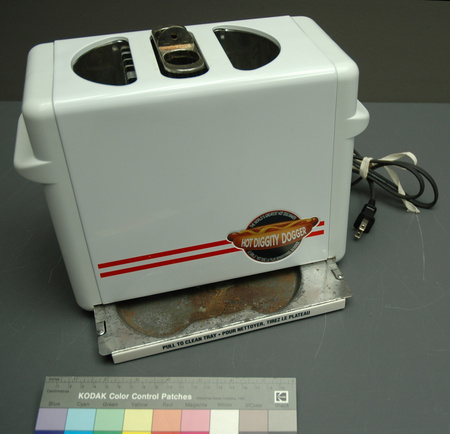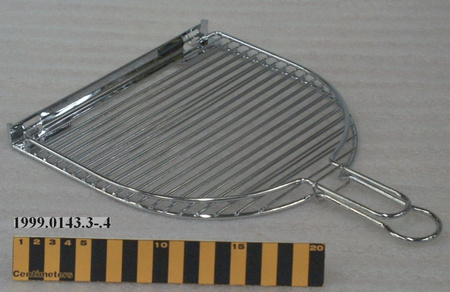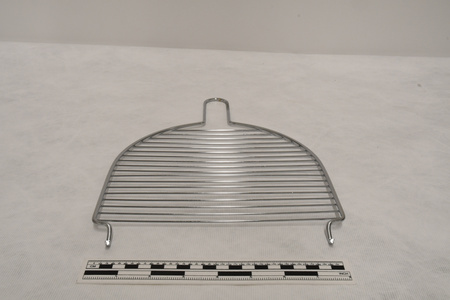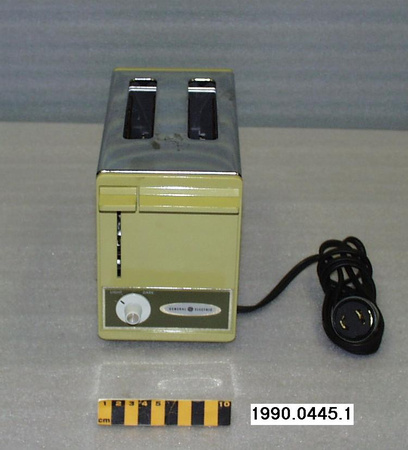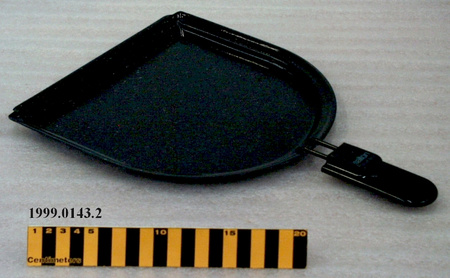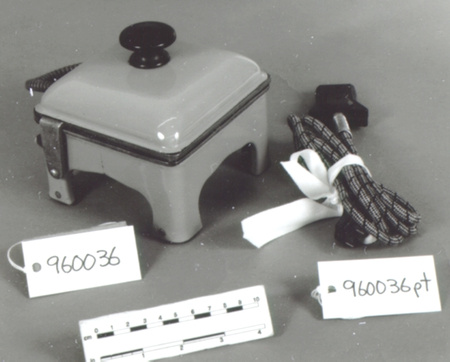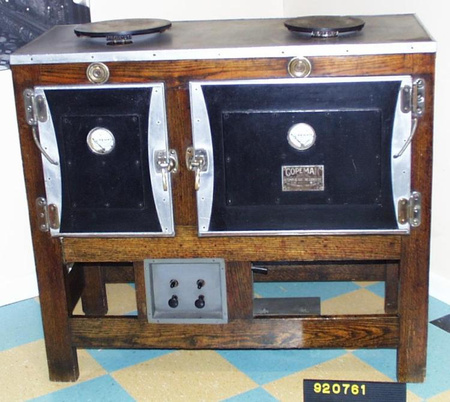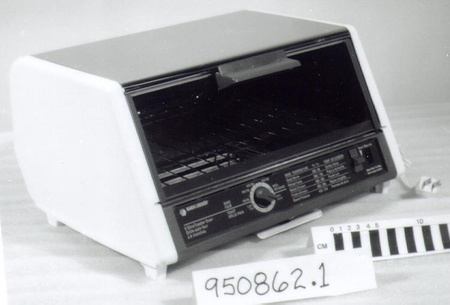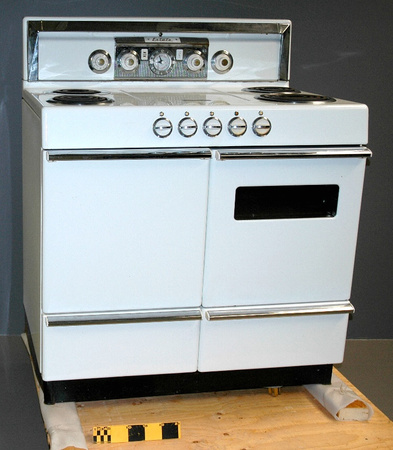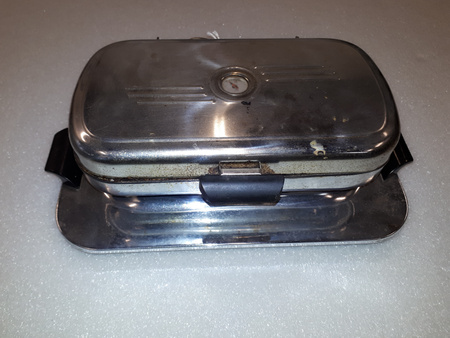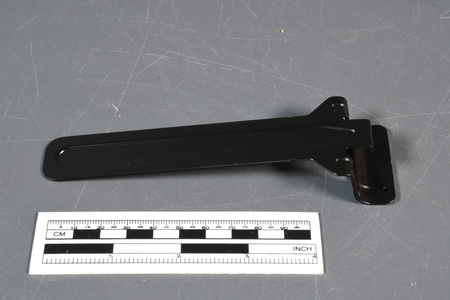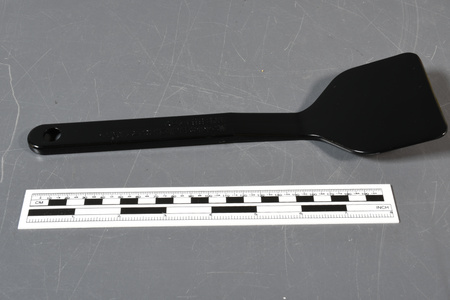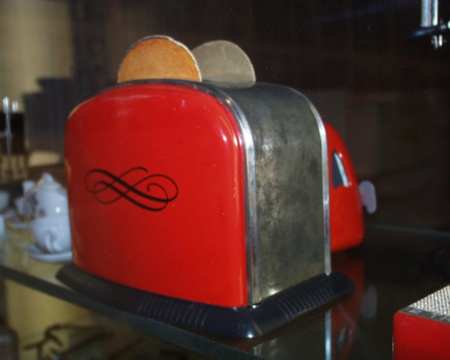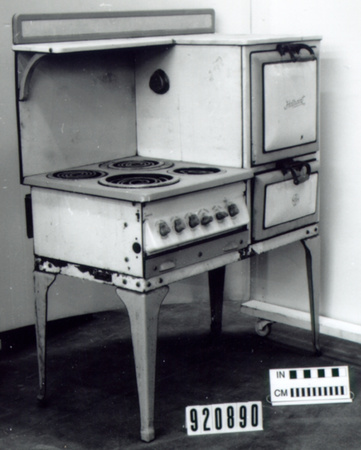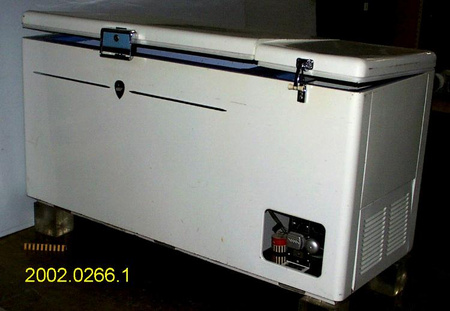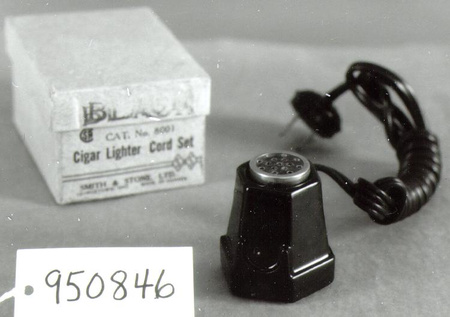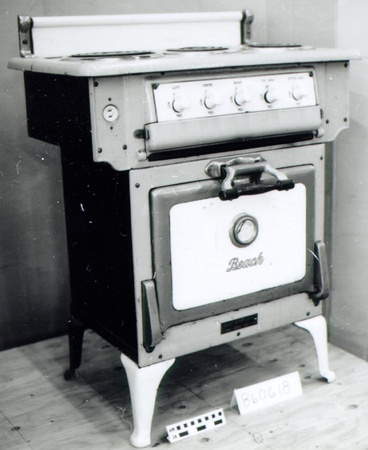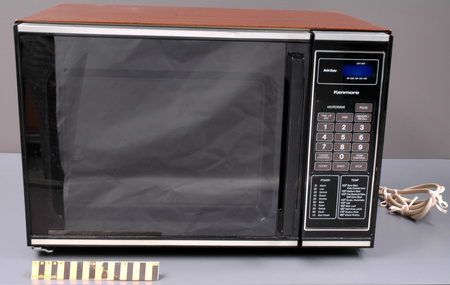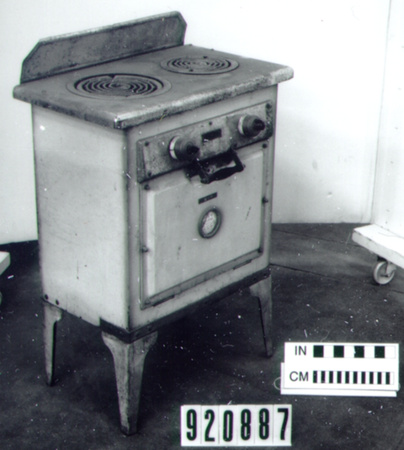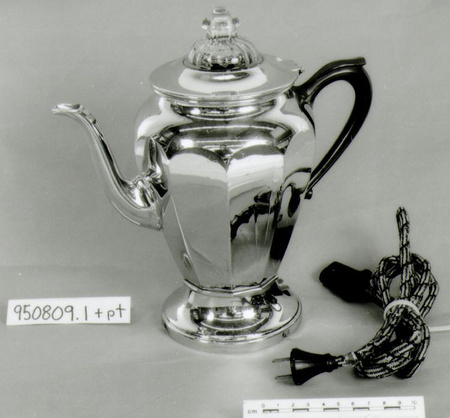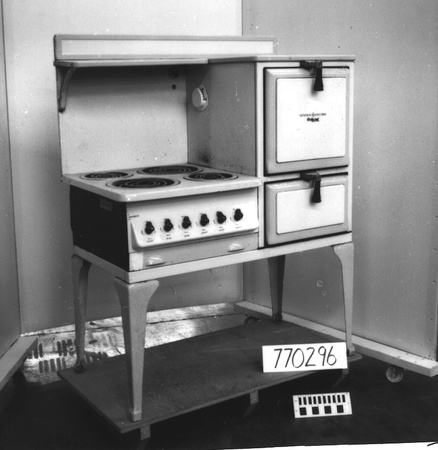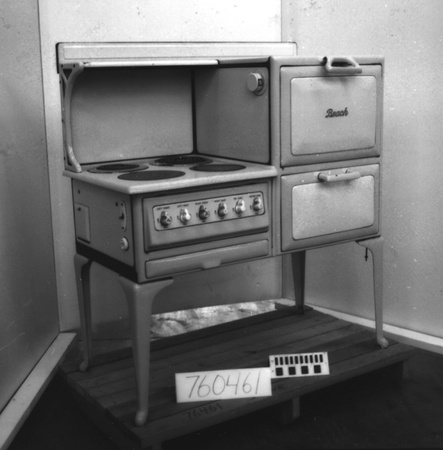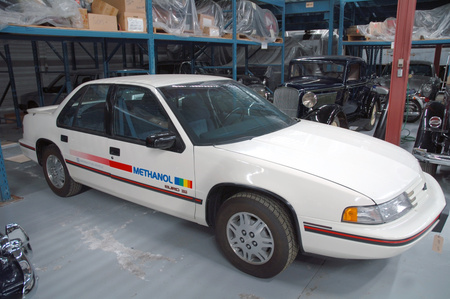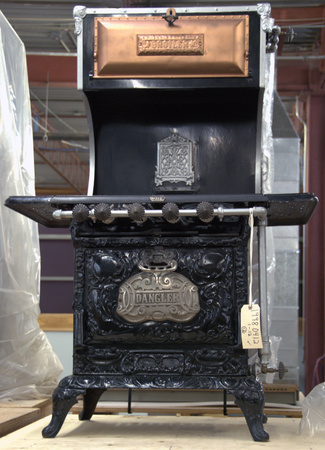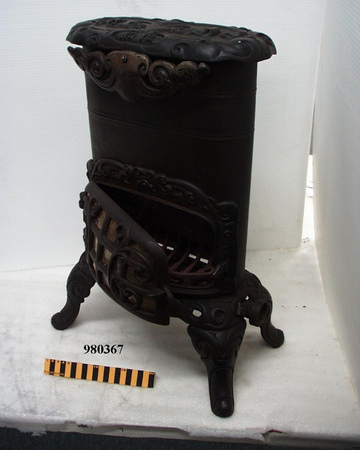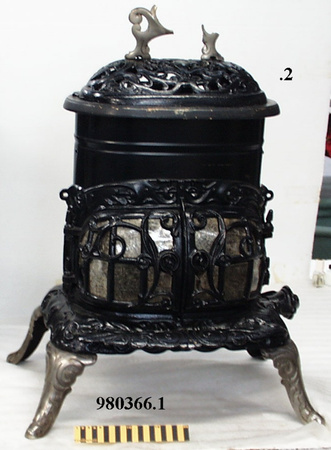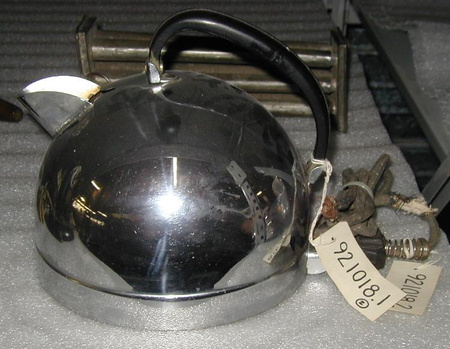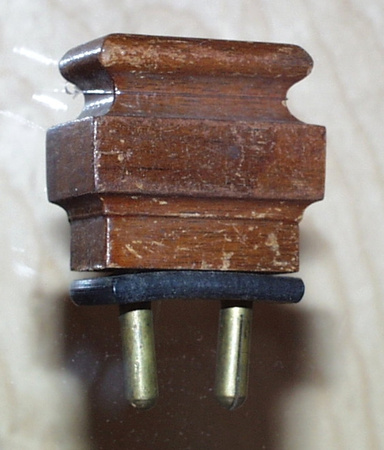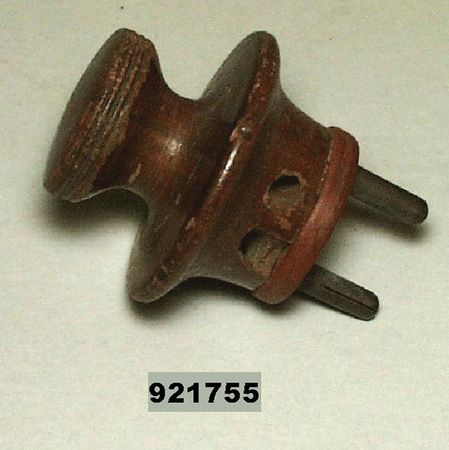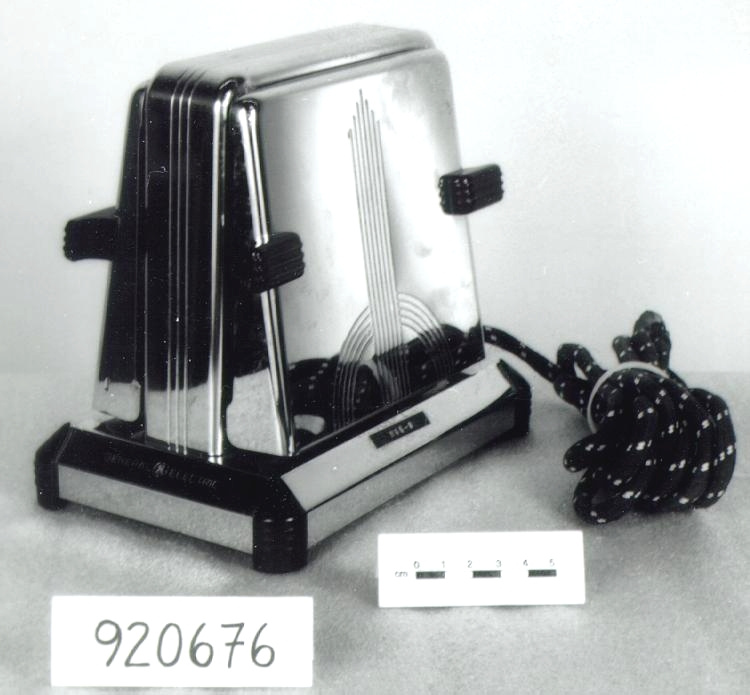Grille-pain
Utiliser cette image
Puis-je réutiliser cette image sans autorisation? Oui
Les images sur le portail de la collection d’Ingenium ont la licence Creative Commons suivante :
Copyright Ingenium / CC BY-NC-ND (Attribution-NonCommercial 4.0 International (CC BY-NC 4.0)
ATTRIBUER CETTE IMAGE
Ingenium,
1992.0676.001
Permalien:
Ingenium diffuse cette image sous le cadre de licence Creative Commons et encourage son téléchargement et sa réutilisation à des fins non commerciales. Veuillez mentionner Ingenium et citer le numéro de l’artefact.
TÉLÉCHARGER L’IMAGEACHETER CETTE IMAGE
Cette image peut être utilisée gratuitement pour des fins non commerciales.
Pour un usage commercial, veuillez consulter nos frais de reproduction et communiquer avec nous pour acheter l’image.
- TYPE D’OBJET
- ELECTRIC/REVERSING SIDE PANEL
- DATE
- 1940
- NUMÉRO DE L’ARTEFACT
- 1992.0676.001
- FABRICANT
- Canadian General Electric
- MODÈLE
- Inconnu
- EMPLACEMENT
- Toronto, Ontario, Canada
Plus d’information
Renseignements généraux
- Nº de série
- S/O
- Nº de partie
- 1
- Nombre total de parties
- 1
- Ou
- S/O
- Brevets
- S/O
- Description générale
- CHROME PLATED PRESSED METAL BASE, HOUSING & PANELS/ WIRE ELEMENTS WRAPPED AROUND SHEET MICA ELEMENT CORES/ METAL WIRE GRILLS/ SYNTHETIC FEET & SIDE PANEL HANDLES/ FIBRE COVERED CORD/ RUBBER PLUG WITH BRASS PRONGS
Dimensions
Remarque : Cette information reflète la taille générale pour l’entreposage et ne représente pas nécessairement les véritables dimensions de l’objet.
- Longueur
- 20,0 cm
- Largeur
- 12,7 cm
- Hauteur
- 17,9 cm
- Épaisseur
- S/O
- Poids
- S/O
- Diamètre
- S/O
- Volume
- S/O
Lexique
- Groupe
- Technologie domestique
- Catégorie
- Traitement de nourriture
- Sous-catégorie
- S/O
Fabricant
- Ou
- General Electric
- Pays
- Canada
- État/province
- Ontario
- Ville
- Toronto
Contexte
- Pays
- Inconnu
- État/province
- Inconnu
- Période
- Inconnu
- Canada
-
Around the time of the production of this product, Canadian households with electricity began to increase significantly. Between 1941-1951, the percentage of homes with electricity increased from 69.1% of homes, to 87.8%, with higher percentages in urban regions of the country (Ref. 1). To encourage further use of electricity in homes during low-peak hours, electric companies in Canada began to encourage use of electrical appliances. These companies targeted women in their marketing, promoting the benefits of appliances to reduce workload in the kitchen. Showrooms were set up across Canada by various electric manufacturers, inviting women to view various electrical appliances (Ref. 2). As Canadians were introduced to the benefits of electricity in the kitchen, there was initially higher uptake of small electric appliances, such as toasters and irons, than the larger appliances. Between 1952-1960, the total number of toasters that were manufactured in Canada increased from 198,200 to 278,567 toasters total, or a total value of $1.2 million to $2.6 million (Ref.3). By 1931, 40% of homes across Canada owned a toaster (Ref. 1). This toaster was manufactured by Canadian General Electric. General Electric was a large American manufacturer and a well-known name in Canadian homes by the mid-1900s. A large part of electrical appliance economy in Canada was dominated by American imports, and over time larger U.S. corporations began to move manufacturing into Canada to reduce cost of high tariffs. (Ref. 4) Canadian General Electric was established initially in Peterborough, Canada in 1891. They continued to open manufacturing facilities in Canada, including in Barrie and Toronto. (Ref. 5) - Fonction
-
To toast bread on one side, other side is toasted by turning the bread manually. Can toast up to two slices of bread at a time. - Technique
-
The toaster is made of metal and geometric in form. The triangular body is a common shape of early toaster design. The elegant ornamentation featured on the doors feature repetitive and linear patterning that is characteristic of the art deco style (Ref. 6). Wire is wrapped around mica sheets to create a heating element for the toast, an approach that is used in the design of toaster components to this day. This toaster features flip-down doors, a functional design choice that protects the user from coming in direct contact with a hot element. - Notes sur la région
-
Inconnu
Détails
- Marques
- INCISED PRINTING ON UNDERSIDE OF BASE READS: 'CAT. NO. T19 - 475W - 115V./CANADIAN GENERAL ELECTRIC COMPANY LIMITED/ TORONTO, CANADA C.S.A. APP. NO. 336'/ 'GENERAL GE [LOGO] ELECTRIC' INCISED ON BASE AT SIDE/ MFR'S MARKS ON PLUG READ: 'PAT [?]/ 250V 660W' & 'GE' [LOGO]
- Manque
- From CA of 03/15/1994 by Tony Missio: No - Complete
- Fini
- BASE, HOUSING & PANELS METAL WITH POLISHED CHROME FINISH/ELEMENT CORES GRAY MICA/ GRILLS METAL NICKEL? PLATED/ FEET & SIDE PANEL HANDLESBLACK SYNTHETIC/ CORD BLACK & WHITE FIBRE/ PLUG BLACK RUBBER WITH PRONGS BRASS UNFINISHED
- Décoration
- PATTERN OF INCISED PARALLEL LINES ON DOORS, SIDES & TOP, HANDLES & FEET
FAIRE RÉFÉRENCE À CET OBJET
Si vous souhaitez publier de l’information sur cet objet de collection, veuillez indiquer ce qui suit :
Canadian General Electric, Grille-pain, vers 1940, Numéro de l'artefact 1992.0676, Ingenium - Musées des sciences et de l'innovation du Canada, http://collection.ingenium.ca/fr/id/1992.0676.001/
RÉTROACTION
Envoyer une question ou un commentaire sur cet artefact.
Plus comme ceci


